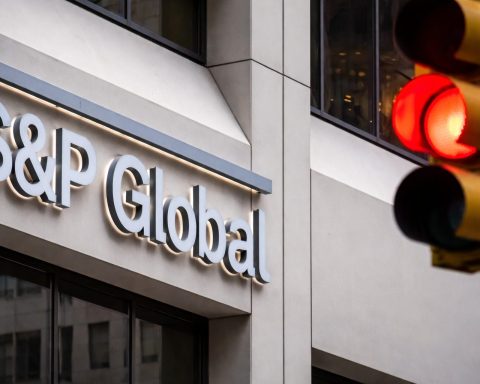Lucid Group (NASDAQ: LCID) shares extended their post-earnings and post-financing slide on Thursday as Wall Street digested the electric-vehicle maker’s fresh $875 million convertible senior notes deal and a sharp price target cut from $70 to $30 by Benchmark.
LCID closed around $15.66 on November 13, down about 5.6% on the day and roughly 8% over the last two sessions, as investors weighed the trade‑off between much‑needed liquidity and the risk of future dilution. [1]
Below is a deep dive into what happened, why Lucid’s stock is under pressure, and what the latest analyst calls and financial moves could mean for shareholders.
Key Takeaways
- Lucid has priced $875 million of 7.00% convertible senior notes due 2031, with an option for an extra $100 million, primarily to refinance its 1.25% 2026 notes. [2]
- The notes carry an initial conversion price of about $20.81, a 22.5% premium to the $16.99 share price on November 11, and could translate into roughly 42–47 million new shares if fully converted. [3]
- Benchmark slashed its LCID price target from $70 to $30 today while maintaining a Buy rating, citing the refinancing but still seeing upside from a ~$16 share price near a 52‑week low. [4]
- Lucid’s Q3 2025 revenue jumped about 68% year over year to roughly $337 million with deliveries of 4,078 vehicles, but the company posted an adjusted EBITDA loss of around $718 million and remains deeply cash‑burning. [5]
- A strengthened relationship with Saudi Arabia’s Public Investment Fund (PIF) and a Level 4 autonomy partnership with Nvidia give strategic support, but investors remain focused on dilution, execution risk, and profitability timelines. [6]
LCID Stock Today: Two Days of Selling After the Deal
Lucid’s shares have now fallen three sessions in a row as markets absorbed the news of the new debt and subsequent pricing details:
- Nov 11, 2025: LCID closed at $16.99, the reference price for the convertible’s conversion premium. [7]
- Nov 12, 2025: Shares slid to $16.59 (‑2.4%) after the offering was announced and then priced at 7%. [8]
- Nov 13, 2025: The stock dropped again to about $15.66, a 5.6% one‑day decline, on the heels of Benchmark’s price‑target cut and continued concerns around dilution and leverage. [9]
At intraday levels near $16, LCID is trading just above its 52‑week low around $15.25, according to today’s analyst commentary, underscoring how sour sentiment has become despite a still‑bullish rating from Benchmark. [10]
Inside Lucid’s $875 Million Convertible Notes Deal
Lucid’s new financing sits at the center of today’s market action. Here’s what investors need to know.
Deal structure
According to Lucid’s press release and subsequent filings, the company has: [11]
- Priced $875,000,000 of convertible senior notes due November 1, 2031.
- Set the coupon at 7.00%, paid semi‑annually on May 1 and November 1.
- Granted initial purchasers a 13‑day option to buy up to an additional $100 million of notes (a “greenshoe”).
- Sold the notes in a Rule 144A private offering to qualified institutional buyers.
The issue is senior, unsecured debt: it sits ahead of equity in the capital structure but behind any secured creditors.
Conversion terms and potential dilution
The notes can be converted into LCID common stock under specified conditions, including at the company’s option after certain dates and price thresholds. Key metrics: [12]
- Initial conversion rate: 48.0475 shares per $1,000 of principal.
- Initial conversion price: Approximately $20.81 per share, a 22.5% premium to the November 11 closing price of $16.99.
- Implied new shares at full conversion (base deal): about 42 million.
- Implied new shares including greenshoe: roughly 47 million.
Benchmark estimates that if the notes eventually convert, total share count could rise by that 42–47 million range, adding meaningful dilution on top of existing equity. [13]
Use of proceeds: Refinancing, not aggressive expansion
Rather than being a pure “growth at all costs” raise, Lucid is effectively refinancing and extending its debt maturity wall:
- The company expects net proceeds of about $863.5 million, or $962.4 million if the greenshoe is fully exercised. [14]
- Around $752.2 million is earmarked to repurchase roughly $755.7 million of its 1.25% convertible senior notes due 2026.
- The remainder goes to general corporate purposes.
In short: Lucid is swapping cheaper, near‑term 2026 debt for higher‑cost 2031 debt, buying time at the expense of a bigger interest bill and potential dilution later.
Redemption and investor protections
The notes include standard protections and optionality for both sides: [15]
- Issuer call: Lucid can redeem the notes (cash) on or after November 6, 2028, if LCID trades at 130% or more of the conversion price for a set period and liquidity conditions are met.
- Investor put: Holders can force Lucid to repurchase the notes on November 1, 2029, or upon certain “fundamental changes,” at par plus accrued interest.
- Settlement flexibility: Upon conversion, Lucid can deliver cash, shares, or a mix, giving management flexibility if the share price is volatile.
PIF’s Prepaid Forward and Liquidity Backstop
Lucid’s largest shareholder, Saudi Arabia’s Public Investment Fund (PIF), remains central to the story.
Prepaid forward stock transaction
In connection with the note pricing, Ayar Third Investment Company, a wholly‑owned PIF subsidiary, entered a prepaid forward transaction with a dealer affiliate of one of the note purchasers. [16]
- Ayar is slated to purchase about $636.7 million of Lucid common stock, based on the same $16.99 reference price, with settlement expected around the notes’ maturity.
- The structure is designed to facilitate hedging by note investors via derivatives on LCID shares.
- Depending on market conditions and when the transaction settles, this could support the share price near pricing — or later add to selling pressure when hedges are unwound.
Lucid itself is not a party to this prepaid forward, but the arrangement highlights PIF’s continued willingness to write substantial checks to support the company’s balance sheet.
Expanded credit facility
Beyond equity and convertibles, Lucid and PIF recently agreed to increase a delayed‑draw term loan facility from $750 million to roughly $2 billion, contributing to total liquidity of about $5.5 billion when combined with cash and equivalents. [17]
This financial backstop buys Lucid several years of runway to:
- Ramp production of the Gravity SUV.
- Develop its mid‑size EV platform targeted for late 2026.
- Invest in advanced driver‑assistance and autonomous technology.
Benchmark Slashes LCID Price Target to $30 — But Stays Bullish
Today’s headline on the analyst front comes from Benchmark, which lowered its price target on LCID from $70 to $30 while reaffirming a Buy rating. [18]
According to the new note:
- The cut is largely tied to Lucid’s debt refinancing, updated valuation assumptions, and persistent execution risk.
- Still, with the stock near $16, the new target implies upside of almost 90% from current levels.
- Benchmark flags that the conversion price of $20.81 is close to InvestingPro’s fair value estimate, framing the notes as both a funding tool and an implicit valuation marker. [19]
Benchmark is not alone in reassessing Lucid:
- Baird recently trimmed its LCID target from $20 to $17, keeping a Neutral rating. [20]
- Cantor Fitzgerald lowered its target from $26 to $21, also at Neutral, citing revised production guidance and earnings misses. [21]
Overall, Wall Street remains split: some see Lucid as a high‑beta way to play premium EVs and autonomous tech; others see an expensive company with persistent cash burn and dilution risk.
Q3 2025: Strong Growth, Heavy Losses
The financing comes on the heels of a mixed Q3 2025 earnings report.
Revenue and deliveries
Lucid posted: [22]
- Revenue of roughly $336–337 million, up about 68% year over year.
- 4,078 vehicles delivered in the quarter, a 47% increase versus a year earlier.
- Around 10,500 vehicles delivered year‑to‑date through September, already surpassing the ~10,200 delivered in all of 2024.
That pace also marked seven consecutive quarters of record deliveries, reflecting growing traction for the Lucid Air and early momentum for the Gravity SUV.
Losses and free cash flow
The growth is costly:
- Adjusted EBITDA loss: about $718 million in Q3. [23]
- Net loss: nearly $1.0 billion (about $978 million). [24]
- Free cash flow over the last 12 months: negative $3.38 billion, according to InvestingPro data cited in note coverage. [25]
Lucid ended Q3 with $1.6 billion in cash and equivalents and over $2 billion of debt, before factoring in the expanded PIF credit line and the new convertible notes. [26]
Strategic Moves: Leadership Shakeup and Nvidia Partnership
While today’s trading is all about financing, Lucid’s strategic story has also evolved in recent weeks.
Management changes
Earlier this month, Lucid announced organizational changes that included the departure of its Chief Engineer, among other leadership shifts, aimed at accelerating growth and sharpening decision‑making across global operations. [27]
Investors are watching to see whether:
- The new structure improves manufacturing execution and cost control.
- Key technical expertise is retained as the company scales.
Nvidia and Level 4 autonomy
On the technology front, Lucid recently expanded its partnership with Nvidia to work on Level 4 autonomous driving capabilities for future vehicles. [28]
The collaboration ties into Lucid’s vision of:
- Selling premium EVs that are software‑defined and upgradeable.
- Potentially monetizing advanced driver‑assistance features via subscriptions or software packages.
Autonomy is a long‑term catalyst, but in the near term the market remains more focused on how quickly Lucid can ramp volume and reduce unit costs.
Why Are Investors Worried? The Dilution vs. Survival Trade‑Off
The sell‑off over the last few days isn’t just about a single number — it’s about the signal that Lucid is still very much in “fund‑raising mode.”
Bear case: More debt, more shares, no profits yet
Skeptical investors highlight that: [29]
- A 7% coupon is relatively expensive debt for a company with negative free cash flow.
- If LCID’s stock eventually trades above the $20.81 conversion price, the notes could add tens of millions of shares to the float.
- Existing shareholders face a double hit:
- Higher interest expenses in the near term.
- Potential dilution in the long term.
Combined with persistent losses, this fuels concerns that more capital raises may be needed before Lucid reaches sustainable profitability.
Bull case: Runway, refinancing, and a growing product lineup
Supporters counter that:
- Swapping 2026 notes for 2031 notes pushes out the debt maturity wall and lowers near‑term refinancing risk. [30]
- The PIF credit facility and prepaid forward demonstrate continued backing from a deep‑pocketed strategic shareholder. [31]
- Lucid is entering a crucial phase with:
- The Gravity SUV rollout.
- A coming mid‑size crossover starting around $50,000, targeted for late 2026. [32]
For long‑term bulls, today’s lower share price may simply reflect short‑term financing noise rather than a change in the underlying EV opportunity.
What to Watch Next
For investors following LCID, several near‑term milestones stand out:
- Settlement of the convertible notes around November 17, 2025, and any early trading dynamics from hedging or the prepaid forward. [33]
- Additional analyst revisions as firms update their models for the new capital structure and Q3 numbers.
- Updates on:
- Gravity SUV production and deliveries.
- The mid‑size platform and product timing.
- Progress on Nvidia‑powered Level 4 features.
- Any further organizational changes or cost‑reduction plans to narrow losses.
Quick FAQ: Lucid Group (LCID) on November 13, 2025
Why is Lucid’s stock falling today?
LCID shares are under pressure as investors react to the $875 million, 7% convertible notes deal, the prospect of future dilution, and today’s price target cut from $70 to $30 by Benchmark, even though the rating remains Buy. [34]
How much dilution could the new notes cause?
At the initial $20.81 conversion price, the base $875 million issue could convert into roughly 42 million shares, rising to about 47 million if the extra $100 million option is fully exercised. Actual dilution depends on LCID’s share price and whether Lucid settles in cash, stock, or a mix. [35]
Is Lucid running out of cash?
Lucid is burning cash, but it is not out of liquidity. After Q3, management cited roughly $5.5 billion in total liquidity, including cash and an expanded credit facility with PIF. The new convertible notes further reinforce that cushion, albeit at the cost of higher interest and potential dilution. [36]
What is Benchmark’s new price target and rating?
Benchmark now targets $30 per share, down from $70, but still rates LCID a Buy, reflecting both increased caution and perceived upside from current levels around $16. [37]
This article is for informational purposes only and does not constitute investment advice. Investors should do their own research or consult a licensed financial adviser before making investment decisions.
References
1. stockanalysis.com, 2. www.prnewswire.com, 3. www.prnewswire.com, 4. www.investing.com, 5. www.investing.com, 6. electrek.co, 7. www.prnewswire.com, 8. stockanalysis.com, 9. stockanalysis.com, 10. www.investing.com, 11. www.prnewswire.com, 12. www.prnewswire.com, 13. www.investing.com, 14. www.prnewswire.com, 15. www.prnewswire.com, 16. www.prnewswire.com, 17. electrek.co, 18. www.investing.com, 19. www.investing.com, 20. www.tipranks.com, 21. www.investing.com, 22. www.investing.com, 23. www.investing.com, 24. simplywall.st, 25. www.investing.com, 26. electrek.co, 27. simplywall.st, 28. simplywall.st, 29. www.tipranks.com, 30. www.prnewswire.com, 31. electrek.co, 32. electrek.co, 33. www.prnewswire.com, 34. www.prnewswire.com, 35. www.prnewswire.com, 36. electrek.co, 37. www.investing.com







